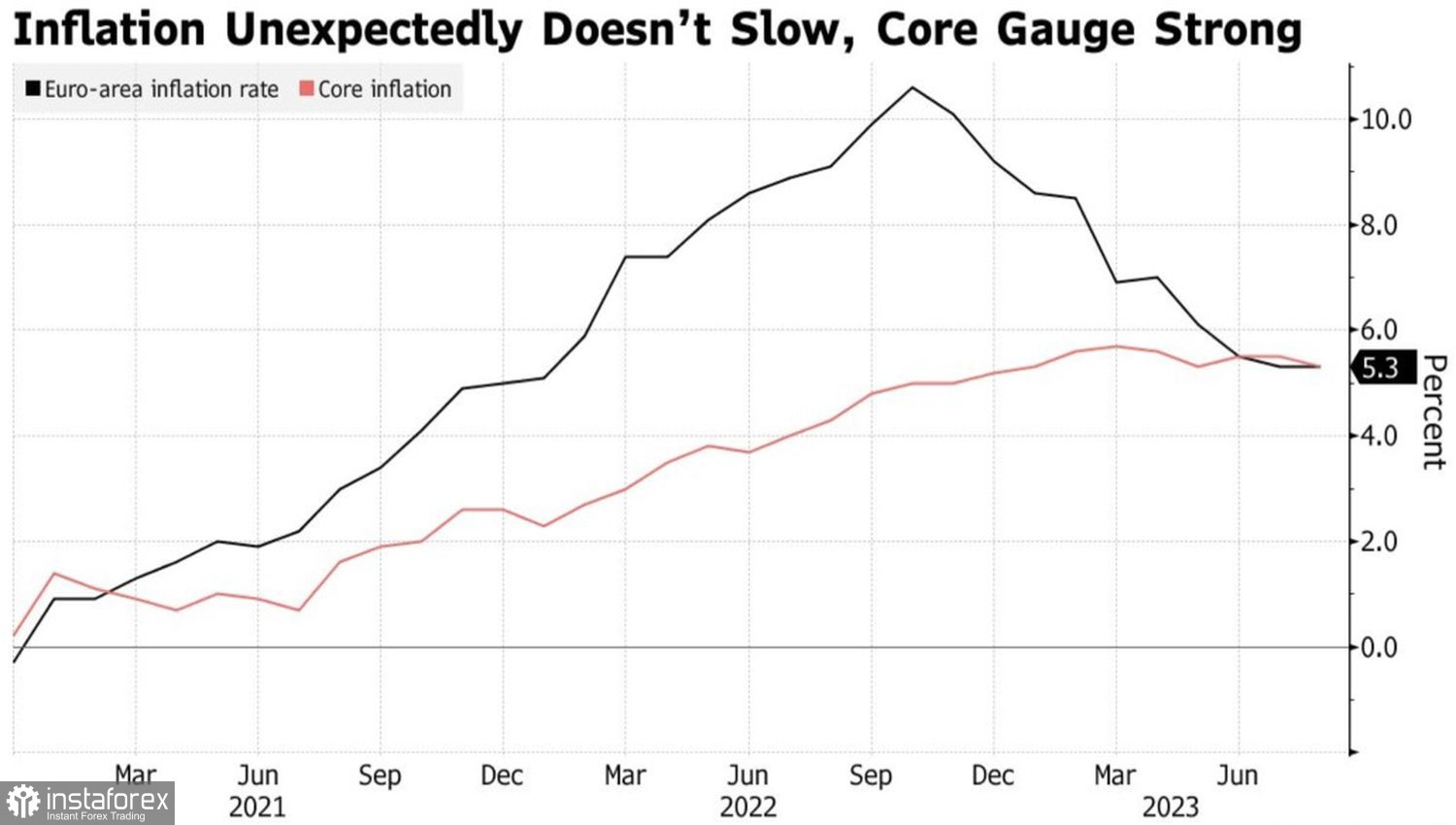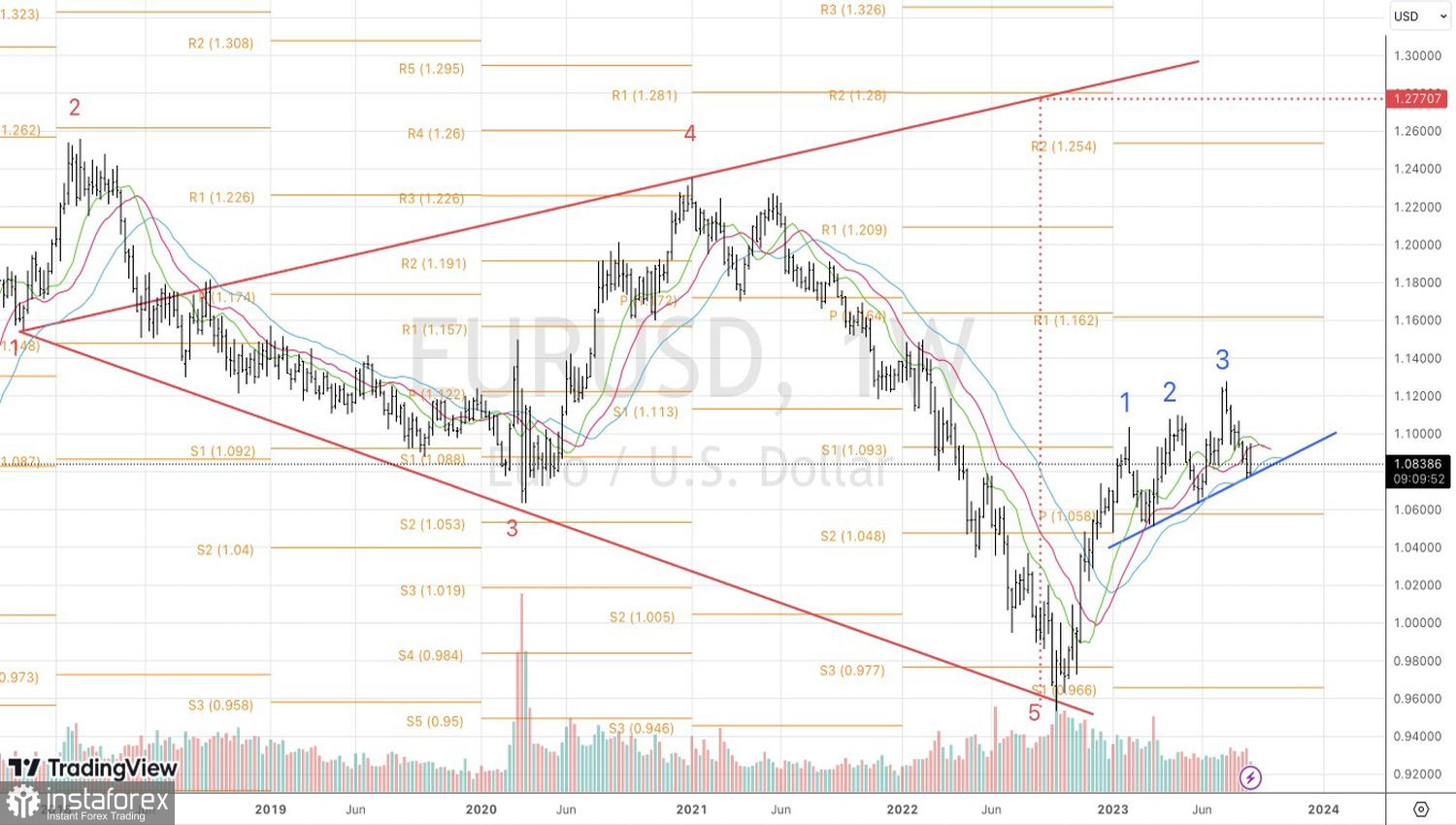Divergences rule the ball on Forex. A divergence in economic growth between the U.S. and the Eurozone led to the fall of EUR/USD in July–August. Unfulfilled hopes for a divergence in the monetary policies of the ECB and the Fed accelerated this process. The question is, what should we expect next from central banks and the economies behind them? And the answers vary.
According to ING, investors are overestimating the factor of American exceptionalism. The savings rate of the population is falling, fiscal stimulus due to the pandemic are drying up, loan rates are skyrocketing, and cracks are appearing in the labor market. Further deterioration will force the Fed to lower the federal funds rate earlier than the CME derivatives expect. Their forecasts point to June, but ING suggests it will happen in the first quarter. As a result, the U.S. dollar will weaken.
Conversely, pessimism regarding the Eurozone economy is off the charts. Perhaps the ECB won't raise the deposit rate above 4% anymore, but the dovish pivot in Europe will occur later than in the U.S. This will happen in the summer of 2024, allowing ING to predict a decrease in the real yield differential between U.S. and German bonds and a surge in EUR/USD to 1.15.
Dynamics of the ECB's deposit rate

Danske Bank holds the opposite view. They argue that the market is abuzz about a soft landing, a situation in which the U.S. economy slows down but doesn't go into recession. At the same time, inflation drops to the 2% target. Investors clearly underestimate the risks of consumer prices accelerating again. If that happens, the Fed will be forced to resume the monetary policy tightening cycle, causing EUR/USD to plummet to 1.05.
Both forecasts have a grain of truth in them. The U.S. economy will indeed slow down, allowing for buying EUR/USD in the medium term. U.S. inflation will soon start posing a new peak risk, creating tailwinds for the dollar. Most likely, the best strategy in the current situation is short-term sales of the main pair on the rise, followed by a transition to medium- and long-term long positions.
Such a strategy has proven itself at the turn of summer and autumn when stronger data on European consumer prices unexpectedly sank the euro. In fact, investors took note of the slowdown in service inflation from 5.6% to 5.5%.
European inflation dynamics


The U.S. labor market data for August may not give either EUR/USD buyers or sellers an advantage, although significant movements are possible. The U.S. economy may not lose steam too quickly, but inflation will soon rear its ugly head.
Technically, on the EUR/USD weekly chart, a secondary Three Indians pattern is forming against the backdrop of the realization of the Wolfe Waves. A fall in quotes below 1.08 will be a basis for sale. Conversely, a return above the pivot level at 1.093 is a reason to buy the pair.





















